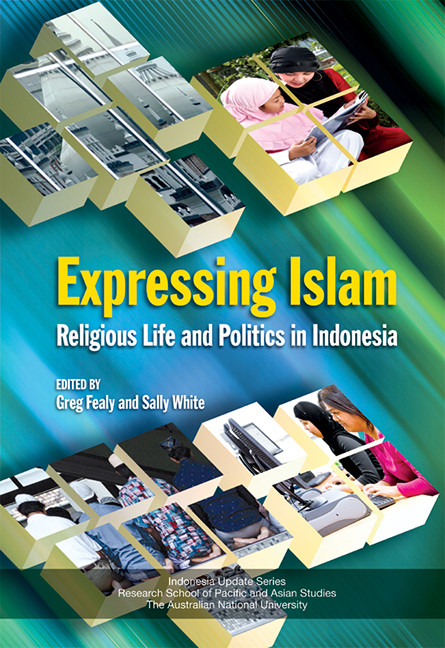Book contents
- Frontmatter
- Contents
- List of Figures and Tables
- List of Contributors
- Acknowledgments
- Glossary
- Map
- 1 Introduction
- PART I EXPRESSING PERSONAL PIETY
- PART II POLITICAL, SOCIAL AND LEGAL EXPRESSIONS OF ISLAM
- PART III THE ISLAMIC ECONOMY
- 13 The Development of Islamic Banking in the Post-crisis Indonesian Economy
- 14 Islamic Microfinance Initiatives to Enhance Small and Medium-sized Enterprises
- 15 Community Development through Islamic Microfinance: Serving the Financial Needs of the Poor in a Viable Way
- Index
- Indonesia Update Series
- Plate section
14 - Islamic Microfinance Initiatives to Enhance Small and Medium-sized Enterprises
from PART III - THE ISLAMIC ECONOMY
Published online by Cambridge University Press: 21 October 2015
- Frontmatter
- Contents
- List of Figures and Tables
- List of Contributors
- Acknowledgments
- Glossary
- Map
- 1 Introduction
- PART I EXPRESSING PERSONAL PIETY
- PART II POLITICAL, SOCIAL AND LEGAL EXPRESSIONS OF ISLAM
- PART III THE ISLAMIC ECONOMY
- 13 The Development of Islamic Banking in the Post-crisis Indonesian Economy
- 14 Islamic Microfinance Initiatives to Enhance Small and Medium-sized Enterprises
- 15 Community Development through Islamic Microfinance: Serving the Financial Needs of the Poor in a Viable Way
- Index
- Indonesia Update Series
- Plate section
Summary
Especially after the Asian monetary crisis, small and medium-sized enterprises (SMEs) acted as a safety valve for the national economy by enhancing economic growth and reducing unemployment. During 2000– 06, the value created by the SME sector increased significantly, while that of large enterprises decreased. SMEs contributed 54.2 per cent of Indonesian gross domestic product in 2005 and absorbed about 79 million workers (96.8 per cent of the labour force) (Setyobudi 2007).
The central bank, Bank Indonesia, has acknowledged that there is little risk attached to the credit distributed to SMEs, whose repayment record has generally been sounder than that of larger enterprises (Setyobudi 2007). Other studies concur that SMEs proved more resilient to the financial crisis than larger enterprises, underpinning their pivotal role in the Indonesian economy (Tambunan 2004). Nevertheless, SMEs continue to have great difficulty gaining access to formal financial institutions. It is in this context that this chapter will explore the emergence of Islamic microfinance initiatives that could provide an alternative source of finance for SMEs.
This chapter highlights the policy and institutional settings for SME development in Indonesia. It then discusses the main players in Islamic microfinance, emphasising in particular the role of Islamic saving and loan cooperatives (BMTs) as a strategic, community-based microlending initiative. The chapter highlights the importance of Islamic microfinance initiatives as part of a national program for SME development. It concludes by identifying the linkages between the various Islamic microfinance players, and identifying some critical aspects of their activities.
OVERVIEW OF POLICIES ON SMALL BUSINESS DEVELOPMENT
Development of SMEs in Indonesia
SMEs have played a significant role in the Indonesian economy for many decades, for numerous reasons. First, there is a high proportion of SMEs in the economy, whether measured by the number of enterprises or their economic output. According to the central statistics agency, BPS, Indonesia had 37 million SMEs in 1998. In that year they contributed 60 per cent of gross national product and constituted more than 95 per cent of the total number of enterprises (BPS 2000). By the end of 2006, the number of SMEs had grown to around 48.9 million (Ministry of Cooperatives 2007).
- Type
- Chapter
- Information
- Expressing IslamReligious Life and Politics in Indonesia, pp. 251 - 266Publisher: ISEAS–Yusof Ishak InstitutePrint publication year: 2008

